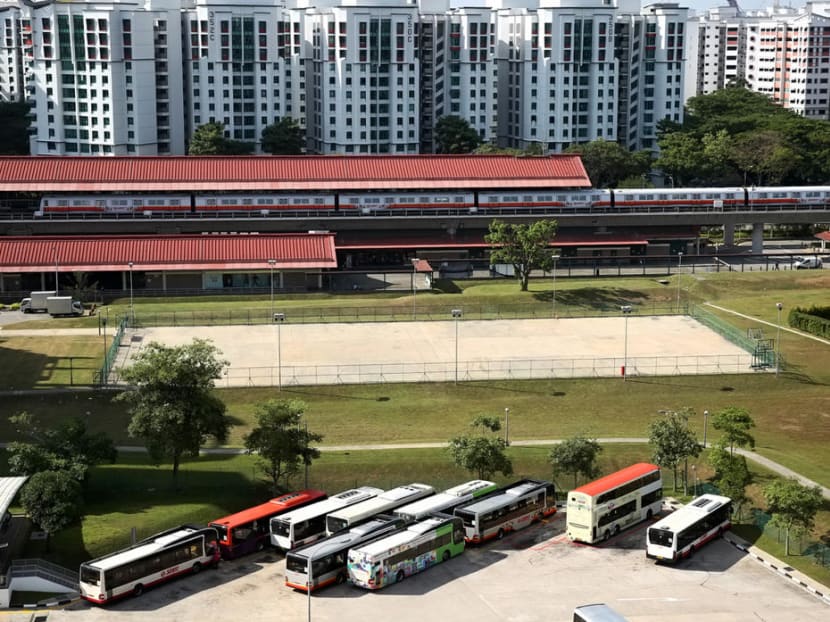S'pore's public transport fares 2nd most affordable among major cities, not always sustainable for operators: Study
SINGAPORE — With bus and train fares likely to go up in a few months, the Public Transport Council (PTC) on Tuesday (Oct 23) released a study which showed that public transport fares in Singapore are the second most affordable among a dozen major cities, beating others in the region including Taipei and Hong Kong.
SINGAPORE — With bus and train fares likely to go up in a few months, the Public Transport Council (PTC) on Tuesday (Oct 23) released a study which showed that public transport fares in Singapore are the second most affordable among a dozen major cities, beating others in the region including Taipei and Hong Kong.
Commissioned by the PTC, the study warned that while low fares “may strike a chord with public commuters”, they are “not necessarily sustainable” for operators due to rising operating costs worldwide.
The study's authors said: “For the Singapore public transport system to be more self-sufficient, the PTC should strike a better balance between fare affordability and cost recovery." They are Associate Professor Michael Li and Assistant Professor Sadat Reza, of the Nanyang Technological University’s Nanyang Business School.
The “international benchmarking study” was done to gain insights into the latest trends in public transport fares, the authors said.
Based on 2016 expenditure levels, Singapore, with an index score of 4.8, was the second most affordable city for public transport fares, after San Francisco (4.1).
This means that, on average, a typical Singaporean family using public transport daily spends about 4.8 per cent of its disposable income on such journeys. The study defines a typical family as one with two working adults and two school-age children in primary and secondary school.
Public transport fares here were found to be more affordable than those in Taipei (5.9), Hong Kong (6.1), Beijing (6.2), Seoul (12.4), London (14.6), and Tokyo (16.2).
While San Francisco topped the affordability chart, the study noted that the American city’s public transport expenditure was 28 per cent higher than Singapore’s. However, its disposable income was also 48 per cent higher.
London’s public transport system would have recorded a S$2.16 billion loss in fare revenue if Singapore’s fares were used on its network, said the study. Similarly, Hong Kong would have suffered a S$713 million loss.
This is because Singapore’s public transport system recorded the lowest fare revenue collected per passenger-kilometre at 11 cents in 2016.
In second spot was Hong Kong (14 cents), followed by Sydney at 15 cents. At 19 cents, London had the highest fare revenue per passenger-kilometre.
Owing to limitations on data, only seven cities were compared on this measure.
The study also found that Singapore is one of four cities with a fully integrated public transport fare structure, where no extra boarding charge is imposed on commuters transferring between buses and trains. The other cities are New York, Seoul and Toronto.
It also noted Singapore’s “fair” distance-based fare structure, where prices are pegged to the distance travelled.
Singapore’s senior-citizen concessionary rates were also lower than those in most other cities studied. For instance, while Singapore’s fixed-distance concessionary bus fares for 60-year-old seniors were slightly higher than Beijing’s, its rates were lower than those in Hong Kong, Sydney and Taipei.
Concessionary fares in Singapore for secondary school students taking the trains were the lowest among the 12 cities, and the third-lowest after London and Beijing if they were commuting by bus.
POSSIBLE FARE HIKE
Kicking off its latest fare review exercise last month, the PTC said that fares for buses and trains could rise by up to 4.3 per cent — or not more than 10 cents per journey — as early as the year’s end.
After three consecutive years of sliding public transport fares driven mainly by falling energy prices, the PTC said the rise under a new fare formula will largely be due to a sharp rebound in energy prices, wage growth for bus captains and rail employees, as well as the highest rate of inflation in three years.
Associate Professor Walter Theseira, a transport economist with the Singapore University of Social Sciences, said then that the 4.3 per cent maximum allowable fare-adjustment quantum was not too surprising, as fares had been going down over the past few years.
This reduction was not sustainable, he had noted.









